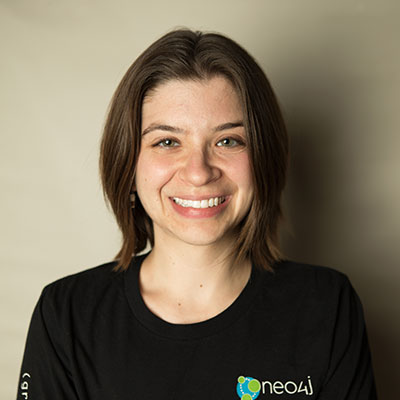What’s Spring Live?
Watch nowWe know things are scary and challenging right now, and community matters more than ever. So we thought we’d bring ours together—at least virtually.
Hang out with an all-star lineup for a unique, 24-hour virtual conference featuring compelling talks about cloud native architecture. We’ll mix in a few interactive workshops, too!
Who’s speaking at this thing? It’s an amazing crew, featuring great folks from VMware, Microsoft, Confluent, Okta, Google, and more. We’ll go deep on a wide range of topics, including:
- Reactive programming
- Event stream processing
- Multi-cloud architecture
- Serverless computing
- Continuous delivery
- Kubernetes
- Microservices
- High-performing teams
We’re also taking the money we allocated for now-cancelled events and donating it to a cause that matters. For each person who joins the event, we’ll make a donation to the Center for Disaster Philanthropy (COVID-19 Response Fund).
Sign up now, and we’ll send you details on how to join this one-time event.
Agenda
MARCH 19 · 9:00–18:00 PDT · 16:00–1:00 GMT // MARCH 20 · 1:00–10:00 JST
|
Josh Long @starbuxman |
|
|
Madhura Bhave @madhurabhave23 |
|
|
Mark Heckler @MkHeck |
|
|
Cora Iberkleid @ciberkleid |
|
|
Tola (Omotola) Awofolu |
|
|
Michael Minella @michaelminella |
|
|
Jonathan Regehr (Vanguard) @jonathanregehr |
|
|
Jennifer Reif @JMHReif |
|
|
Thomas Risberg @trisberg |
|
|
Laura Santamaria |
|
|
Nate Schutta @ntschutta |
|
|
Kerry Schaffer @mskerryschaffer |
|
|
Oliver Hughes @olliehughes82 |
MARCH 19 · 18:00–1:00 PDT // MARCH 20 · 10:00–17:00 JST · 1:00–8:00 GMT
| Keynote | |
|
Raju Gandhi @looselytyped |
|
|
Boskey Savla @boskey |
|
|
Angela Chin @angelaschin |
|
|
Brian Sletten @bsletten |
|
|
Kylie Liang @liangkylie |
|
|
Ray Tsang @saturnism |
|
|
Kenneth Kousen @kenkousen |
|
|
Soby Chacko @sobychacko |
MARCH 20 · 1:00–9:00 PDT · 17:00–1:00 JST · 8:00–16:00 GMT
| Keynote | |
|
Dawn Foster @geekygirldawn |
|
|
Hannah Foxwell @hannahfoxwell |
|
|
Walter Scarborough |
|
|
Dr. Syer @david_syer |
|
|
Martin Lippert @martinlippert |
|
|
Alberto C. Ríos @albertoimpl |
|
|
Jeff Williams @planetlevel |
|
|
Aaron Parecki @aaronpk |
|
|
Streams Must Flow: Developing Fault-Tolerant Stream Processing Applications with Kafka Streams and Kubernetes
Viktor Gamov @gAmUssA |
MARCH 20 · AFTER-HOURS TALKS
|
Arjen Poutsma @poutsma |
|
|
Julien Dubois @juliendubois |
|
|
Josh Long @starbuxman |
Speakers
 |
Tola (Omotola) Awofolu is a Platform Architect at VMware with over 18 years of experience in application architecture and full-stack development. Prior to VMware, she has worn different hats in software engineering, worked in both public and private sectors of tech, and built enterprise systems using several different programming languages, with Java being her personal favorite. She enjoys the poetic artistry of code, the keen depth of poetry, and the poetry of music. |
 |
Laura Santamaria is a developer with experience in Python and JavaScript. Currently, she is a developer advocate for LogDNA. Previously, she worked as a software developer in tech, briefly moonlighted as a startup CTO, and was an information developer and technical editor in tech and academia. She also co-chaired the crew that runs global events, including the company-wide internal conference, for technical employees, managing a team of roughly 10 people. |
 |
Ray Tsang @saturnism is a Developer Advocate for the Google Cloud Platform and a Java Champion. Ray has extensive hands on cross-industry enterprise systems integration delivery and management experiences during his time at Accenture, managed full stack application development, DevOps. Ray specialized in middleware, big data, and PaaS products during his time at Red Hat while contributing to open source projects, such as Infinispan. Aside from technology, Ray enjoys traveling and adventures. |
 |
Kylie Liang @liangkylie is Senior PM at Cloud + Enterprise Group of Microsoft with 15+ years of working experience in software development, people and program management, product planning and open source community engagement. |
 |
Cora Iberkleid @ciberkleid is an Advisory Cloud Application and Platform Architect at VMware, where she helps enterprises leverage modern technologies like Spring Boot, Spring Cloud, and Cloud Foundry in order to deliver better quality software faster. Prior to joining VMware, she spent nearly a decade designing and building enterprise integration applications as part of the Professional Services organizations at Sun Microsystems and Oracle. She has previously spoken at Meetup events, including Cloud Native New York and New York City Spring User Group. |
 |
Jeff Williams @planetlevel brings more than 20 years of security leadership experience as Co-Founder and Chief Technology Officer of Contrast. Previously, Jeff was Co-Founder and Chief Executive Officer of Aspect Security, a successful and innovative application security consulting company acquired by Ernst & Young. |
 |
Angela Chin @angelaschin is a Senior Software Engineer at VMware, currently working on networking across PAS and PKS. She is enthusiastic about open-source technologies, and is particularly interested in all things related to networking and service meshes. When not reasoning about complex, distributed systems, Angela enjoys hiking, hot yoga, and subsequently rewarding herself with lots of delicious food. |
 |
Hannah Foxwell @hannahfoxwell is Associate Director in Platform Ops EMEA, where she helps build wildly successful platform teams with Tanzu. A HumanOps champion, a HugOps evangelist, and a DevOps believer, Hannah has spent most of her career trying to create great working environments for engineers to do their best work. |
 |
Jérôme Wiedemann @romrider42 is Associate Director for Pivotal Cloud Foundry Solutions at Pivotal, based in France. He is enabling Pivotal customers on the Platform as a Product approach by applying XP, Lean and SRE practices. Jérôme is fascinated about automation, CI/CD, home automation and everything with a motor and at least 2 wheels. |
 |
Josh Long @starbuxman is a Spring Developer Advocate at VMware. Josh is a Java Champion, author of five books (including O'Reilly's "Cloud Native Java: Designing Resilient Systems with Spring Boot, Spring Cloud, and Cloud Foundry") and three best-selling video trainings (including "Building Microservices with Spring Boot Livelessons" w/ Phil Webb), and an open-source contributor (Spring Boot, Spring Integration, Spring Cloud, Activiti and Vaadin). |
 |
Dave Syer @david_syer is the Founder of Spring Cloud, Spring Boot, Spring Batch, lead of Spring Security OAuth, and an active contributor to Spring Integration, Spring Framework, Spring AMQP, Spring Security. Experienced, delivery-focused architect and development manager. Has designed and built successful enterprise software solutions using Spring, and implemented them in major institutions worldwide. |
 |
Mark Heckler @MkHeck is a VMware Principal Technologist & Developer Advocate, conference speaker, and published author focusing upon software development for the Internet of Things and the Cloud. He has worked with key players in the manufacturing, retail, medical, scientific, telecom, and financial industries and various public sector organizations to develop and deliver critical capabilities on time and on budget. Mark is a frequent open source contributor and author/curator of a developer-focused blog. |
 |
Michael Coté @cote works at VMware in technical marketing. He’s been an industry analyst at 451 Research and RedMonk, worked in corporate strategy and M&A at Dell in software and cloud, and was a programmer for a decade before all that. He blogs and podcasts at cote.io. |
 |
Nate Schutta @ntschutta is a solution architect focussed on making usable applications. A proponent of polyglot programming, Nate has written two books on Ajax and speaks regularly at various worldwide conferences, No Fluff Just Stuff symposia, universities, and Java user groups. In addition to his day job, Nate is an adjunct professor at the University of Minnesota where he teaches students to embrace dynamic languages. Most recently, Nate coauthored the book Presentation Patterns with Neal Ford and Matthew McCullough. |
| Michael Minella @michaelminella is a software engineer, teacher and author with over a decade of enterprise development experience. He is the project lead of Spring Batch and a member of the expert group for JSR-352 (java batch processing). Michael is the author of Pro Spring Batch from Apress and the popular Refcard JUnit and EasyMock. Outside of the daily grind, Michael enjoys spending time with his family as well as hobbies including woodworking, photography, and InfoSec. | |
 |
Jennifer Reif @JMHReif is an avid developer and problem-solver. She has contributed to projects for both developer communities and large enterprises to organize and make sense of widespread data assets and leverage them for maximum value. She has worked with a variety of commercial and open source tools and enjoys learning new technologies, sometimes on a daily basis! Learning and writing code are core parts of her daily activities, and she enjoys creating content to share with others. |
| Thomas Risberg @trisberg is a member of the Spring engineering team at Pivotal currently contributing to projectriff - serverless functions for stream and event processing. Thomas joined the Spring Framework open source project in 2003 working on the JDBC support. Thomas co-authored “Professional Java Development with the Spring Framework” together with Rod Johnson, Juergen Hoeller, Alef Arendsen, and Colin Sampaleanu published by Wiley in 2005. | |
| Alberto Rios @albertoimpl is a software engineer interested in building products people love in agile environments with a focus on high-quality tests and clean code. At the moment, I am part of the Spring Engineering team at VMware working from Seville, Spain on a fully remote team. We are building Spring Cloud related products and frameworks to help people adopting a microservices architecture and improving the experience of Spring in Cloud Foundry and Kubernetes. | |
| Oliver Hughes olliehughes82 is a software engineer at VMware working on the Spring Cloud Services team. He is passionate about testing, automation and data engineering. In his spare time he loves windsurfing & cycling. | |
 |
Dawn Foster @geekygirldawn works on OSS Strategy at VMware in London. She has more than 20 years of experience at companies like Puppet Labs and Intel with expertise in community building, open source software, metrics, and more. Dawn is on the Governing Board and is a maintainer for the Linux Foundation’s CHAOSS project. She has a PhD, an MBA and a BS in Computer Science. She has spoken at dozens of industry events, including many Linux Foundation events, OSCON, SXSW, FOSDEM and more. |
| Arjen Poutsma @poutsma is a software engineer on the Spring team at Pivotal SpringSource with twenty years' experience in commercial software environments. He worked on Spring Web Services, Spring MVC, Spring Scala and is currently working on Spring 5. | |
| Martin Lippert @martinlippert leads the Spring Tool Suite and the Spring IDE projects at Pivotal and works together with the tools team on providing the best developer tools out there for Spring and Cloud Foundry. In addition to that he works on next generation developer tooling and innovative new architectures for cloud-based developer tooling. Before joining the Spring family at Pivotal, Martin co-founded it-agile, a leading consulting and development company focused on agile software development. | |
 |
Julien Dubois @juliendubois is a cloud developer advocate at Microsoft. He is known as the creator and lead developer of the JHipster project, and as a Java Champion. In the past 20 years, Julien has mainly worked with the Java and Spring technologies as an architect and as a consultant, working for many different customers across all industries. As he loves to share his passion, Julien wrote a book on the Spring Framework, spoke at more than 100 international conferences, and created several popular Open Source projects. |
 |
Madhura Bhave @madhurabhave23 is a developer at VMware on the Spring Boot team. Before joining the Spring Boot team, Madhura worked on the UAA (Authentication and Authorization component for Cloud Foundry) which is written in Spring. |
 |
Viktor Gamov @gAmUssA is a Developer Advocate at Confluent, the company that makes an event streaming platform based on Apache Kafka. Back in his consultancy days, Viktor developed comprehensive expertise in building enterprise application architectures using open source technologies. He enjoys helping architects and developers to design and develop low latency, scalable and highly available distributed systems. |
 |
Aaron Parecki @aaronpk is the co-founder of IndieWebCamp, a yearly conference on data ownership and online identity. He is the editor of the W3C Webmention and Micropub specifications, and maintains oauth.net. He has spoken at conferences around the world about OAuth, data ownership, quantified self, and even explained why R is a vowel. |
 |
Kenneth Kousen @kenkousen is a software developer, speaker, and technical trainer based in Marlborough, CT. He's president of his own company, Kousen IT, Inc., through which he mostly teaches technical training courses in all areas related to Java, focusing especially on subjects like Android, Spring, Hibernate, Groovy, and Grails. |
 |
Walter Scarborough is a fullstack developer at Pivotal Labs, where he works with a wide variety of technologies and organizations. His research interests include software architectures, better use of automation during development, and improving the overall developer experience. |
 |
Brian Sletten @bsletten is a liberal arts-educated software engineer with a focus on using and evangelizing forward-leaning technologies. He has a background as a system architect, a developer, a security consultant, a mentor, a team lead, an author and a trainer and operates in all of those roles as needed. |
 |
Raju Gandhi @looselytyped is a software craftsman with more than 15 years of hands-on experience scoping, architecting, designing, adapting and implementing full stack applications. Provides a 360 view of the development cycle, with proficiency in a variety of programming languages and paradigms, experience with software development methodologies, as well as expertise in infrastructure and tooling to deliver software that meets users needs in a timely fashion. |
 |
Kerry Schaffer @mskerryschaffer is a Senior IT Director specializing in solution development and delivery. Unique cross functional IT background including solution development, pricing, delivery, and Information Security management supported by both Systems Administration and Development experience. |
 |
Jonathan Regehr @jonathanregehr is a System Architect with Garmin International and has over 20 years of development and architecture experience. He is a thought leader when it comes to Cloud Native development, Pivotal Cloud Foundry, Cloud Native, CI/CD and Automation. Before Garmin, Jonathan’s history includes IT experience in manufacturing, digital marketing, and telecommunications. Jonathan grew up and attended college in Canada but made a remarkable recovery to became a successful member of the Kansas City IT community. |
 |
Soby Chacko @sobychacko is a core committer to Spring Cloud Stream and Data Flow projects and a contributor to various other Spring projects. He is currently focussed on building data streaming and processing systems within the context of Spring Cloud Stream and Apache Kafka.Prior to joining the Spring engineering team, Soby has extensively worked with several Spring related projects for many years in various industries. |
 |
Boskey Savla is a senior technical marketing manager for the vCloud Air Network group at VMware. She works on developing resources for vCloud Air Network partners with various VMware product stacks, focusing on the VMware vCloud Director software solution. She has more than 12 years of experience in systems and solution engineering. She has worked with various VMware partners in certifying and architecting Software-Defined Data Centers and hybrid cloud solutions. |
 |
Scott Buchanan is a Senior Director, Product Marketing at VMware. Previously, he was the VP of Marketing at Heptio. |
Code of conduct
VMware is dedicated to providing and promoting a safe and inclusive environment for everyone, regardless of gender identity and expression, sexual orientation, disability, neurodiversity, physical appearance, body size, ethnicity, nationality, race, age, religion, or other protected categories. Because we don’t always know what might make someone else feel uncomfortable or unwelcome, these guidelines are meant to reinforce our values and clarify our expectations of all of those who participate in our community and events. They also define unacceptable behavior and provide instructions on what you can do if you see unacceptable behavior.
We each have different backgrounds and experiences. At VMware, we have three core values that we expect all to abide by: do the right thing, do what works, and be kind.
Expected behavior
- Be considerate, respectful, and collaborative.
- Refrain from using any demeaning, discriminatory, or harassing behavior and speech.
Unacceptable behavior
Unacceptable behavior may include, but is not limited to, the following:
- Harassment and discrimination, which includes: any verbal, physical, or visual conduct based on sex, sexual orientation, gender expression or identity, transgender status, race, age, national origin, disability, or other protected characteristics; inappropriate use of nudity and/or sexual images in public spaces (including presentation slides); deliberate intimidation, stalking, or following; harassing photography or recording; sustained disruption of sessions, talks, or other events; and inappropriate physical contact, or any unwelcome sexual attention.
- Using any boisterous, lewd, or offensive behavior or language; using sexually explicit or offensive language or conduct; using profanity, obscene gestures, or racial, religious, homophobic, transphobic, or ethnic slurs; commenting about a person’s body or sexual activity; and discussing sexual activity.
- Failing to obey any of the rules or regulations of the event or instructions of the event staff.
- Participating in any other illegal activity not already covered above.
Consequences of unacceptable behavior
We won’t tolerate unacceptable behavior. If a participant engages in unacceptable behavior, the event organizers may take any action they deem appropriate, up to and including expulsion from the event without warning or refund and, if appropriate, involving local law enforcement. Anyone asked to stop unacceptable behavior is expected to comply immediately.
How to report unacceptable behavior
If you have a complaint or concern about harassment, discrimination, bullying, or any other conduct that violates the VMware Events Code of Conduct, please contact [email protected].
We thank our attendees in advance for your help in keeping the event welcoming, respectful, and friendly to all participants.
Register Now!
Thank you!
We look forward to you joining us.
Event connection details below:
Segment 1 https://vmware.zoom.us/j/999528872
(Add to calendar)
Segment 2 https://vmware.zoom.us/j/367002317
(Add to calendar)
Segment 3 https://vmware.zoom.us/j/980640839
(Add to calendar)